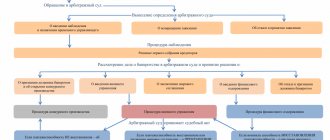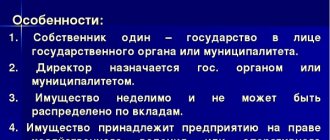Getting rid of all debts once and for all is the cherished dream of many debtors. Bankruptcy Law No. 127-FZ provides this opportunity, but imposes a number of requirements on bankrupts. One of the main things is absolute honesty. It is quite logical that all attempts by debtors to carry out fictitious or deliberate bankruptcy will be identified, and the failed bankrupt himself will face very severe consequences.
4 Comments
The difference between intentional bankruptcy and fictitious bankruptcy
There are several important differences between intentional and fictitious bankruptcy, which are related to the purpose of the procedures and the responsibility of the parties, which is provided for in the Criminal Code and the Administrative Code. You can clearly see all the main differences in the comparative table.
| sign | fictitious | deliberate |
| definition according to the Criminal Code (Article 196) and the Code of Administrative Offenses (Article 14.12.) | statement of insolvency of a company or individual entrepreneur, which is made with the deliberate purpose of misleading | knowingly committing an act or deliberate omission that results in financial insolvency |
| purpose of action | obtaining more favorable conditions for loan payments or the opportunity not to pay them by deliberately deceiving creditors | illegal seizure of assets, fight against a competing company by completely stopping its activities |
| liability under the Criminal Code | Art. 197 | Art. 196 |
| liability under the Code of Administrative Offenses | Part 1 Art. 14.12. | Part 2 Art. 14.12. |
| responsibility towards the chief accountant | Art. 14.13. Code of Administrative Offenses | |
How to prove
What to determine the main signs of intentional bankruptcy listed above:
- inventory is carried out;
- additionally, an analysis of the financial situation of the legal entity is ordered by bodies having the appropriate powers.
This is also important to know:
Consequences of termination of bankruptcy proceedings
The task of determining the nature of bankruptcy - intentional or unintentional - lies with the insolvency administrator.
Checking for the presence of intentional insolvency is carried out in two stages:
- Inventory of property owned by the enterprise, including assets, analysis of paying ability.
- Verification of the legality of transactions made by the company over the past three years, which could lead to the insolvency of the legal entity.
What are the signs of bankruptcy of an individual? Details here.
Expertise
An examination is one of a number of procedures based on identifying deliberate bankruptcy.
It is carried out in relation to:
- constituent documents of the company;
- information obtained from accounts receivable and from creditors;
- reports of the chief accountant for the last period;
- statements of debts;
- tax returns;
- materials of the work of audit commissions;
- written results of audits.
Drawing up a conclusion on the presence of signs of deliberate and fictitious bankruptcy
An audit of the activities of a bankrupt legal entity carried out by an arbitration manager ends with the issuance of a conclusion on the presence of signs of deliberate bankruptcy. We will talk about fictitious bankruptcy and its signs in the next section of the article.
Here, however, we note that the conclusion about the existing signs of deliberate and fictitious bankruptcy is drawn up according to general rules and contains the same mandatory attributes:
- date and place of execution of the conclusion;
- information about the insolvency practitioner and the self-regulatory organization to which he is a member;
- data of the arbitration court, as well as details of the judicial act that introduced the bankruptcy procedure, and the date of the determination by which the manager was approved;
- full name of the bankrupt legal entity, its OGRN, INN, legal address;
- conclusion about the absence or presence of signs of deliberate and fictitious bankruptcy;
- calculations and motivation for the conclusion made, indicating the actions of the management of the legal entity, transactions made by the legal entity, which caused the bankruptcy of the legal entity.
The prepared conclusion is submitted to the arbitration court considering the case, and is also transferred to the meeting of bankruptcy creditors. If there are signs of deliberate and fictitious bankruptcy, the document is transferred to law enforcement agencies to initiate a criminal case or, when there are no signs of a crime, to bring the perpetrators to administrative responsibility.
Cancellation of transactions
An examination of the above documents allows us to establish the legality of transactions carried out in recent years.
If they do not meet the requirements of the modern market, then this may be an indication of the unreliability of the legal entity.
Such transactions include the sale of the debtor's property for an amount not equal to its market or inventory value.
This is also important to know:
What constitutes unlawful actions in bankruptcy
Moreover, the disputed transactions include:
- Actions related to the fulfillment of obligations to repay debts, regardless of the period of occurrence.
- Instructions or orders on the basis of which material remuneration for employees is increased.
Transactions carried out by third parties, but affecting the financial situation of individual entrepreneurs or legal entities, are subject to cancellation:
- writing off financial resources from the bankrupt account (executive documents are no exception);
- transfer of funds to the creditor’s account if they violate the order of repayment of debts;
- failure to return the debtor's property pledged by him.
Signs
Signs of deliberate creation of conditions for deliberate bankruptcy, which will lead the company to financial insolvency, are identified during the appropriate inspection by the arbitration manager. They can be divided into 2 groups:
- The formal sign is insolvency: the company cannot fully or partially meet its previously accepted financial obligations.
- Informal signs:
- a large increase in the percentage of accounts receivable;
- documentation during inspection is not provided on time and incompletely;
- large fluctuations in balance sheet reporting (both in liabilities and assets);
- reduction of capital or its rapid growth;
- a sharp increase or a sharp decrease in inventories;
- an increase in wage arrears, dividend payments or tax payments.
Information
Such signs allow us to judge the imminent financial collapse of the enterprise. If they are created intentionally or management deliberately does nothing to prevent the development of such a situation, then we are talking about deliberate bankruptcy.
Detection of deliberate bankruptcy
The responsibility for identifying signs of deliberate bankruptcy lies with the insolvency administrator. At the same time, the verification procedure itself is carried out according to the instructions prescribed in Government Decree No. 855. It contains temporary rules according to which the arbitration manager can establish the fact of fictitious or deliberate bankruptcy.
The procedure is carried out in 2 stages:
- First, the documentation characterizing the financial capabilities of the debtor to answer for its debts is analyzed. Special calculations are made, on the basis of which the values of the coefficients are determined. It is by them that the economic situation of the company is judged. If it is determined that according to 2 or more indicators the situation has changed significantly for the worse, then the 2nd stage of clarification is carried out.
- At this stage, the company's transactions over a certain period of time are analyzed, which could lead to a deterioration in its financial condition. The Temporary Rules provide a complete list of transactions whose conditions contradict market conditions:
- transactions as a result of which the debtor’s property is transferred to other parties, and less liquid assets are provided in exchange (this is not a purchase and sale);
- purchase or sale on terms that are initially unfavorable to the debtor;
- acquisition of property that is illiquid;
- acquisition of debt obligations that are not secured by tangible property;
- replacement of some financial obligations with those that are less beneficial for the debtor.
Information
If the fact of a conspiracy of organizers contributing to deliberate bankruptcy is revealed, then interested parties can contact the appropriate arbitration court and submit a petition. This is done to conduct an examination, which should establish the fact of deliberate bankruptcy.
Signs of deliberate and fictitious bankruptcy
Checking the debtor's case for attempts at deliberate bankruptcy is carried out by the arbitration manager in the event that the initiator of the application is the borrower, and not the creditors.
Financial transactions, transactions and the sale and purchase of property 3 years before the start of the bankruptcy procedure are taken into account. At the same time, periods of deterioration in the debtor’s financial position are identified and compared with these data, and the reasons for the decline in solvency are carefully analyzed. The arbitration manager will pay attention to when the loans were taken, for what needs, what led to this and what the financial position of the future bankrupt was at that time.
It is necessary to take into account whether the debtor has previously been accused of fraud and financial fraud.
Responsibility
Types of sanctions that a court can apply to a convicted person, according to Art. 196 of the Criminal Code in case of deliberate bankruptcy, are as follows:
- fine (from 200 thousand to 500 thousand rubles);
- a fine in the amount of income received over a period of 1 to 3 years;
- forced labor (up to 5 years);
- imprisonment (up to 6 years) and a fine (from 200 thousand to 500 thousand rubles).
According to 14.12. The Code of Administrative Offenses penalties are as follows:
- fine for individuals from 1 thousand to 3 thousand rubles;
- a fine on officials from 5 thousand to 10 thousand rubles or disqualification from 1 to 3 years.
Article of the Criminal Code of the Russian Federation on intentional bankruptcy
The concept of deliberate bankruptcy as an economic crime, as well as penalties for it, are described in Article 196 of the Criminal Code. Based on the definition:
- the subjective side of the crime - the intent of the person (direct or indirect);
- subject – one of the founders of the company, its immediate manager, entrepreneur or any interested private person.
To clarify the action or inaction that deliberately leads to the declaring of a company bankrupt, the following examples can be given:
- the manager deliberately keeps silent about accounts receivable and does not demand their repayment by counterparties;
- the manager deliberately creates conditions for an artificial increase in accounts payable (intentional delays on existing loans).
The crime of intentional bankruptcy is of a material nature; it gives rise to several major economic consequences associated with the liquidation of a legal entity:
- cessation of production or other economic activity;
- statewide unemployment;
- possible bankruptcy of companies whose economic activities are closely related to the affected company.
For your information
Damage is considered large if it is estimated at 1.5 million rubles or more, and especially large – from 6 million rubles.
To recognize an act as criminal, it does not matter whether the actions or inactions actually led to actual bankruptcy. The only important thing is that they result in great economic damage.
Raider takeovers and artificial bankruptcy of Russian enterprises
Sleeping agents of the West are destroying Russian industry.
In February 2007, at the Munich Security Policy Conference, Russian President Vladimir Putin gave a famous speech that marked the beginning of Russia's political and economic rebirth as a great world power.
This speech plunged Western elites, who consider themselves the rulers of the world and Russia their eternal colony, into a stupor. From that moment on, the countdown began to continuous attempts to weaken Russian power and the country’s economy through a whole range of measures and steps in various spheres of the functioning of the Russian state. The next year, 2008, will be remembered by everyone for the beginning of Dmitry Medvedev's presidency, as well as the test of Russia's strength with Georgian aggression in South Ossetia and the murder of Russian peacekeepers. However, for wide circles of the Russian public, the West’s steps toward creeping raider takeovers of leading Russian enterprises remained hidden and unnoticed, naturally shifting full responsibility to Russian law enforcement agencies and courts. The endlessly greedy Russian elite, nurtured by the West, has penetrated into all spheres of government and business, bringing with it the laws and orders of its beneficiaries, corrupting Russian society from the inside and simultaneously capturing tidbits of the Russian economy. One of the instigators of this campaign, as expected, was the British press, in particular the liberal publication The Guardian, which in June 2008 published an article ]]>“Raiders of the Russian billions”]]> (Raiders of the Russian Billions), in which it revealed some of the methods of artificial bankruptcies and raider takeovers of Russian enterprises. Without suspecting it, the British described in detail back in 2008 how key sectors of the Russian economy would be captured in the future.
***
In the articles ]]>“The planned collapse of the Russian economy is becoming a reality”]]> and ]]>“State standards - the Stalingrad of Russian industry”]]> I told how, with the help of corruption and raider schemes, entire industry-forming enterprises in Russia are coming under the control of Western companies . And also how this threatens the flagships of Russian industry - enterprises of ferrous and non-ferrous metallurgy, petrochemistry, gas chemistry, the military-industrial complex, the aerospace industry, medicine, electronics and many others. The situation became so alarming and threatening to Russia's national security that it prompted the president of Kislorodmontazh JSC. Chairman of TK114, Academician of the MAX Sergei Tyukulmin to address ]]>a letter]]> to the Chairman of the Government of the Russian Federation Dmitry Medvedev, ]]>letters]]> to the Deputy Prime Minister of the Russian Federation Arkady Dvorkovich, ]]>an appeal]]> to the Secretary of the Security Council Nikolai Patrushev and with ]]>letter]]> to FSB Director Alexander Bortnikov.
The letters indicated that JSC Kislorodmontazh was subjected to a custom-made and planned raider attack and by the end of 2020 was on the verge of bankruptcy. More than a thousand highly qualified specialists in the field of installation of cryogenic equipment were forced to resign, and a real opportunity to revive the strategically important domestic industry for the production of technical gases, including in the field of defense and missile applications, was lost. The Venezuelan project to complete the construction of weapons factories is in jeopardy, which is part of the current US policy to overthrow the legally elected government in this Latin American country. Most Russian gas separation installations have come under the control of American companies, which creates a real threat of sabotage and terrorist attacks on strategic Russian enterprises. ]]>Road Map]]> programs for the revival of the domestic industry for the production of technical gases and equipment have been completely disrupted, which threatens serious damage to the defense capability and security of Russia.
An analytical report on the state of affairs in cryogenics indicates that the Russian market is now dominated by Western companies, Air Products (USA). Due to the applied technologies of artificial bankruptcy and raider takeovers, PJSC Cryogenmash, OJSC Kislorodmash (Odessa), the main manufacturer of oxygen equipment for the Russian army, the Sverdlovsk Oxygen Plant, ceased active operations in Russia. Of the 16 regional oxygen-nitrogen plants in Russia, foreign companies became the property 13, some of which were also stopped. In the Volgograd, Astrakhan, Moscow and other regions, pro-American companies, using their monopoly position, dictate their prices, increase the cost of gases and transfer profits abroad in US dollars.
Using the technologies of “on-site” projects that I described in previous articles, such giants of Russian industry as Cherepovets Severstal, Nizhny Tagil Evrazholding, Magnitogorsk Mechel, Shchekino- Azot", Kaluga branch of NLMK, Novgorod "Krion" and many others. At Baikonur, the American company installed its technological equipment directly under the Saturn radar tracking complex. The construction of gigantic tank farms for storing explosive cryogenic components in close proximity to the main technological installations and with remote control and monitoring from centers in the USA is being imposed everywhere. This threatens the livelihoods of city-forming enterprises and the lives and health of numerous workers.
Rare gases (neon, krypton and xenon), which determine the development of science and high-tech industry in the future, which Russia so urgently needs, are exported abroad in the form of a neon-helium mixture and krypton-xenon concentrate in unlimited quantities. I have already talked in detail about how Russian standards and the technical committees designed to develop them are being destroyed in the article ]]>“State Standards - Stalingrad of Russian Industry”]]>. And now the leading enterprise in the industry has been artificially bankrupt, which headed the technical committee T114, adopted ]]>program]]> and ]]>strategic initiatives]]> to revive the industry, and developed measures for the safe operation of Russian industrial giants in the field of cryogenic technologies. Russia is now creating new types of missile technology, on which the country’s national security is built, but what the missiles will fly on, and whether they will fly at all, in reality depends not on Russia, but on the decision-making center in the United States.
***
An extremely cynical and harsh technology was applied to JSC Kislorodmontazh to eliminate an active and uncompromising competitor. The key point in this technology was the company’s receipt of a contract from Rosoboronexport JSC to complete the construction of weapons factories in Venezuela for a total amount of 7 billion rubles. In March 2020, a competition was announced, in which, according to the point system, JSC Kislorodmontazh won, even though at the final stage, the little-known enterprise in the field of construction of housing and shopping complexes in the Moscow region, LLC Eurostroy, which took 2nd place, gave discount of 200 million rubles. The presence of extensive experience in the industry of industrial construction of hazardous facilities, as well as a more representative volume of permits and licensing documents, allowed Kislorodmontazh JSC to fairly and deservedly win the tender.
However, Eurostroy LLC, after summing up the results of the competition, filed a complaint with the Ministry of Industry and Trade, accusing the winner of a complete lack of competence. The Department of the Ministry of Industry and Trade conducted a detailed review of the complaint and approved the results of the competition. JSC Kislorodmontazh, after coordinating its powers with the FSB, SVR and FS VTS, was approved by a special Resolution of the Government of the Russian Federation as the general contractor for the Venezuelan project.
After this, at the end of 2020, two “representatives” of an incomprehensible structure appear in the office of the company’s president, Sergei Tyukulmin, and begin to openly explain that KM JSC won the competition by accident and took “someone else’s place in the sun.” But since KM JSC has already begun active work on implementing the project even without an advance payment, their “senior comrades” are ready to resolve all misunderstandings regarding the issuance of bank guarantees and administrative support of the project. For this, the president of KM JSC must provide deductions in the amount of 10% in cash from the funds received, and subsequently transfer to them the ownership of all shares of KM JSC free of charge. The extortionists flaunted their personal connections in the largest state corporations and the management of creditor banks. Having received a direct refusal from the main shareholder of the company, the mechanism they promised for reprisals using state security and banking structures was put into action.
***
After 5 months in April 2020, the bailiff of the Moscow UFSSP I.A. Yashenkov simultaneously and illegally imposed a disproportionate arrest on all current accounts of KM JSC, including accounts in Sberbank, as part of the collection of a debt of 34 million rubles, in favor of a logistics company with Western investments Beluga Projects Logistics. Only one account in Sberbank JSC “KM” at that time amounted to almost 73.5 million.
In addition to the seizure of funds, in parallel, all real estate and the entire transport fleet of the company were seized in the amount of 160 units of special equipment worth more than 300 million rubles, thereby completely paralyzing the economic activities of the enterprise with a portfolio of contracts of 22 billion rubles. According to paragraph 6 of Art. 46 of the Federal Law “On Enforcement Proceedings”, the bailiff is obliged to seize and collect funds from the debtor only in the amount and volume necessary to fulfill the actual debt. All official appeals from the management of KM JSC to law enforcement agencies and the Prosecutor General’s Office regarding these facts of lawlessness remained without due attention.
Production activities under all contracts of KM JSC were blocked for a period of more than one year, and hundreds of people were left without work and without wages. Two representatives of the MO OIP UFSSP I.A. Yashenkov and S.V. Pylaeva, disregarding the legality and state expediency, achieved a complete stop to the activities of the flagship for the revival of the cryogenic industry in Russia. With their illegal actions, they also disrupted the implementation of an important contract for Russia in Venezuela. The completion of work on this project remains a big question today. More than one thousand highly qualified workers in the company's branches throughout Russia lost their jobs and their wages.
By solving the criminal task of eliminating unwanted competitors in the development of Russian industry through the wrong hands, Western “directors” of the redistribution of property are generating social tension throughout Russia and creating the preconditions for people to take to street protests. In April, mass layoffs of KM JSC employees began throughout Russia. Actions of the bailiff service represented by bailiff Yashenkov I.A. in relation to JSC Kislorodmontazh in the interests of Western companies ]]>were reflected in the letter]]> of the Territorial Administration of the Federal Property Management Agency in the Moscow Region and were called unlawful and contributing to the termination of the statutory activities of JSC Kislorodmontazh. These actions led to a decrease in the investment attractiveness of the federal block of shares and were organized with the aim of initiating bankruptcy proceedings.
Bailiff A.A. Kazakov, who replaced Yashenkov, instead of promptly deciding to restore the legality of repaying non-critical debt and relieving social tension in the regions, began a lengthy bureaucratic procedure for merging enforcement proceedings across all branches in Russia, which lasted more than 9 months. A slanderous campaign was organized in the media and on the Internet against the main shareholder of KM JSC Tyukulmin]]>.
Bailiffs, having abandoned all restrictions on compliance with the law, began to act outside the framework of this very legality. In June 2020, investigator of the Moscow Federal Bailiff Service M.V. Novikov, without presenting any orders, conducted an unauthorized search at the Khimki office of KM JSC with a “mask show”; without an inventory or witnesses, he confiscated a server and three packages of documents in the accounting department. The appeal of the management of JSC "KM" to the Ministry of Internal Affairs, the Prosecutor's Office, and the Investigative Committee regarding this fact of lawlessness remained unanswered. As a result of the process of planned destruction of JSC Kislorodmontazh, which lasted 1.5 years, the organization lost state registration, property and all significant contracts.
At the initiative of Sberbank PJSC, at the end of 2020, the company was declared bankrupt and placed under external management. In this boundless “assault,” many participants in civil transactions suffered: government customers, subcontractors and suppliers, creditor banks, the Federal Property Management Agency, as a shareholder of KM JSC, tax structures, etc. The enterprise's own investment project for the construction of two cryogenic plants in Volgograd was completely stopped.
These circumstances, of course, were taken advantage of by American concerns when capturing the Russian market for technical gases, in particular Praxair in Volgograd. Projects that are important for Russia will now be frozen for a long time. Thanks to the efforts of the bankruptcy trustee, the property of the bankrupt company, worth hundreds of millions of rubles, began to be sold off cheaply among interested parties.
***
The preliminary threats of the representatives of the “senior comrades” turned out to be far from “dummy”. Western puppet masters, with the help of their greedy “sleeper” agents embedded in all government structures, are effectively destroying the strategic directions of development of Russian industry and enterprises with state participation using such Jesuit methods. The implementation of Russian projects in subsidized regions that are important to us is being purposefully blocked, while at the same time increasing social protest in the Russian hinterlands. A real prospect of deprived people entering the “Maidans” in the Russian interpretation is ensured.
Of course, in quiet government offices, hundreds of projects for reviving the Russian economy with beautiful “digital” names and ideas can be developed, tons of orders and instructions can be implemented, and a lot of beautiful presentations and conferences can be held. However, in practice, processes that are directly opposite to the stated plans and promises occur. Initiatives to debunk the myth of coveted Western investments in the form of “cheese in a mousetrap”, with the prospect of seizing key positions in the domestic industry, are suppressed even at the level of mid-level government structures. It is in principle impossible to reach the attention of the “celestials” responsible for industrial and national security processes. Particularly zealous and disobedient are predictably and specifically punished. Fraudulent criminal cases are being initiated against them under Article 159 of the Criminal Code, and planned bankruptcy procedures are being initiated. Control over the key industries that ensure industrial growth in Russia is smoothly and imperceptibly passing into the hands of Western monopolists. Specialists from ruined “problem assets” are leaving en masse, joining the anti-government protest electorate. Marginal forces under the hidden control of American intelligence services enter the arena of state regulation of industrial and social relations in a timely and imperceptible manner.
***
On February 22, 2020, US Air Force Chief of Staff General David Goldfine announced the development of a plan for a new combat strategy against Russia, the “Trojan Horse,” worth $135 billion. According to the general, this plan is a “secret invasion” deep into enemy territory and an early strike on his weak points. Many Russian experts expressed the opinion that this plan is just being developed and will not be implemented, if any, soon. However, practice shows that the “Trojan horse” is already our reality. It operates and works, influencing, among other things, the Russian economy and industrial development. While Russians are being fed figures about GDP growth and irresistible Russian weapons, “representatives of a hidden invasion” embedded in all government structures are quietly and imperceptibly destroying our economic and moral foundations from within.
We still have hope that government officials will become more aware of the impending danger due to the destructive corrupt activities of high-ranking officials in state corporations and the government. And also with regard to exposing the disguised participation in criminal schemes to ruin successful Russian enterprises of our overseas “partners”, taking into account their political “program of hidden invasion” declared to the whole world in the economy and industry of the Russian state.
Actions in the absence of signs of intentional insolvency
If, based on the results of the inspection, the arbitration manager did not reveal signs of deliberate bankruptcy of a legal entity, such a conclusion is made in the relevant document and justifications are attached with calculations of coefficients, analysis of transactions and additional documents.
The conclusion is transmitted to several authorities and structures:
- to the relevant arbitration court;
- to the relevant authorities to draw up a protocol on the absence of signs (within 10 working days).
Interested parties may appeal such a decision by filing an appeal.
Reasons that can lead to deliberate insolvency of an enterprise
An analysis of deliberate bankruptcy shows that in most cases it occurs due to the fact that management is unable to manage the enterprise skillfully and effectively. It is more profitable for the management team to sell property at auction and earn millions than to engage in everyday work and develop their own business.
This is also important to know:
Legal support of bankruptcy procedures: description, stages, procedure
In addition, deliberate bankruptcy can occur for the following reasons:
- Unprofitable or unprofitable transactions were made within two years.
- Excessive, unjustified expenses of the organization.
- Misuse of loans or simple theft.
- Selling property at suspiciously low prices.
If there are two or more such signs, then we can say with confidence that the company’s management is ineffective and can easily decide on a fraudulent enterprise insolvency scheme.
Misconduct
A description of actions that are considered illegal in the event of deliberate bankruptcy is contained in Article 195 of the Criminal Code. Possible options and responsibilities for them are given in the table.
| action | responsibility |
| deliberate concealment of property, as well as rights to it or property obligations, and information about it | fine from 100 thousand to 500 thousand rubles. or income for a period of 1 to 3 years or imprisonment for up to 2 years or forced labor for up to 3 years |
| if the creditors' claims were satisfied unlawfully | fine up to 300 thousand rubles. or income for up to 2 years or forced labor for up to 1 year |
| if special circumstances arise that interfere with the verification activities of the arbitration manager | fine up to 200 thousand rubles. or income for a period of up to 1.5 years or compulsory work up to 480 hours or correctional labor up to 2 years |
Statistics of intentional bankruptcies in the Russian Federation
Judicial practice based on the enforcement of Article 196 of the Criminal Code of the Russian Federation is not particularly diverse. The reasons for this phenomenon are that collecting evidence in cases of deliberate bankruptcy is a rather difficult task, since this type of economic crime has its own specifics.
Information
Statistically speaking, convictions are extremely rare. For example, during the years from 2013 to 2014, out of 2,971 cases in court, the court took the prosecution’s side in only 14.
For the entire 2020, significantly fewer cases were considered - 31, while the prosecution won in 8 of them.
At the same time, statistics show that most often, to deliberately bring an enterprise into insolvency, interested parties use the following methods:
- concluding obviously unprofitable transactions for the sale or acquisition of property;
- concluding a lease agreement on terms unfavorable for the company;
- transfer of a certain part of the company’s assets as a contribution to its share in the authorized capital of another legal entity.
The total number of cases of deliberate bankruptcy of legal entities is constantly increasing. This is due to the deterioration of economic conditions in the state. The reason is also that many business managers strive to use a complex, ambiguous procedure for identifying relevant facts, incomplete elaboration of the issue in judicial practice and the obviously low chances of the prosecution in such a process.
What is the difference between intentional and sham bankruptcy?
Intentional bankruptcy of an individual is regulated by Art. 196 of the Criminal Code of the Russian Federation. If the court, during an inspection, finds evidence that a citizen deliberately took out loans and borrowings in order to later demonstrate the deterioration of his financial condition and bring the matter to bankruptcy, he bears criminal liability.
Checking for possible deliberate bankruptcy is a mandatory part of the procedure carried out by the insolvency administrator. The very essence of this crime comes down to the fact that a person deliberately arranges a situation in such a way that it looks like a deterioration in financial condition, although in fact this is not the case.
How does this happen:
- An individual takes out several loans and borrowings from banks and microfinance organizations. Individual entrepreneurs, in turn, can also accumulate debts through deferred payments for purchased goods, etc.
- Next, a deliberate deterioration of one’s financial situation begins: money is wasted, property is sold, and the proceeds from this do not go to pay off debts.
- A situation is reached in which the court can declare the debtor bankrupt, and at this point an application is submitted to the court for the legal write-off of accrued and unpaid debts.
Read Unpaid loans: what can be the consequences of non-payment of loans?
Fictitious bankruptcy is another article, 197 of the Criminal Code of the Russian Federation. The difference with deliberate bankruptcy is that in the first case, before the very fact of bankruptcy, a whole chain of actions is built, which obviously leads to financial insolvency; in fictitious bankruptcy, the debtor deliberately hides the real state of his finances in order to achieve recognition as bankrupt.
That is, the debtor does not disclose real financial capabilities so that the court declares him bankrupt and writes off his debts. There is a fraudulent scheme called “friendly accounts payable”, where the lender and the borrower enter into a conspiracy and then divide the money received as a result of the sale of property in half.
Peculiarities
The problems of identifying the crime of deliberate bankruptcy and, accordingly, initiating a case are associated with the following circumstances:
- The crime provision is largely of a blanket nature; it is not sufficiently developed in the law in terms of specific procedures for collecting evidence, the grounds for initiating a criminal case, and the verification procedure.
- The specifics of the definition of a crime largely depend on the conclusion that the arbitration manager draws up after the inspection.
- The amount of economic damage from illegal actions is determined on the basis of a competition. At the same time, many issues of this procedure are not sufficiently worked out, which raises the problem of classifying the damage as large and especially large. Accordingly, this is reflected in the ambiguity of the application of sanctions to those responsible.
The development of various aspects of the investigation of cases related to the deliberate bringing of a company to deliberate insolvency, the features of the verification procedure and the collection of evidence is an essential condition for the development of relevant judicial practice. Therefore, deliberate bankruptcy still remains one of the blind spots in domestic legal practice regarding economic crimes.











